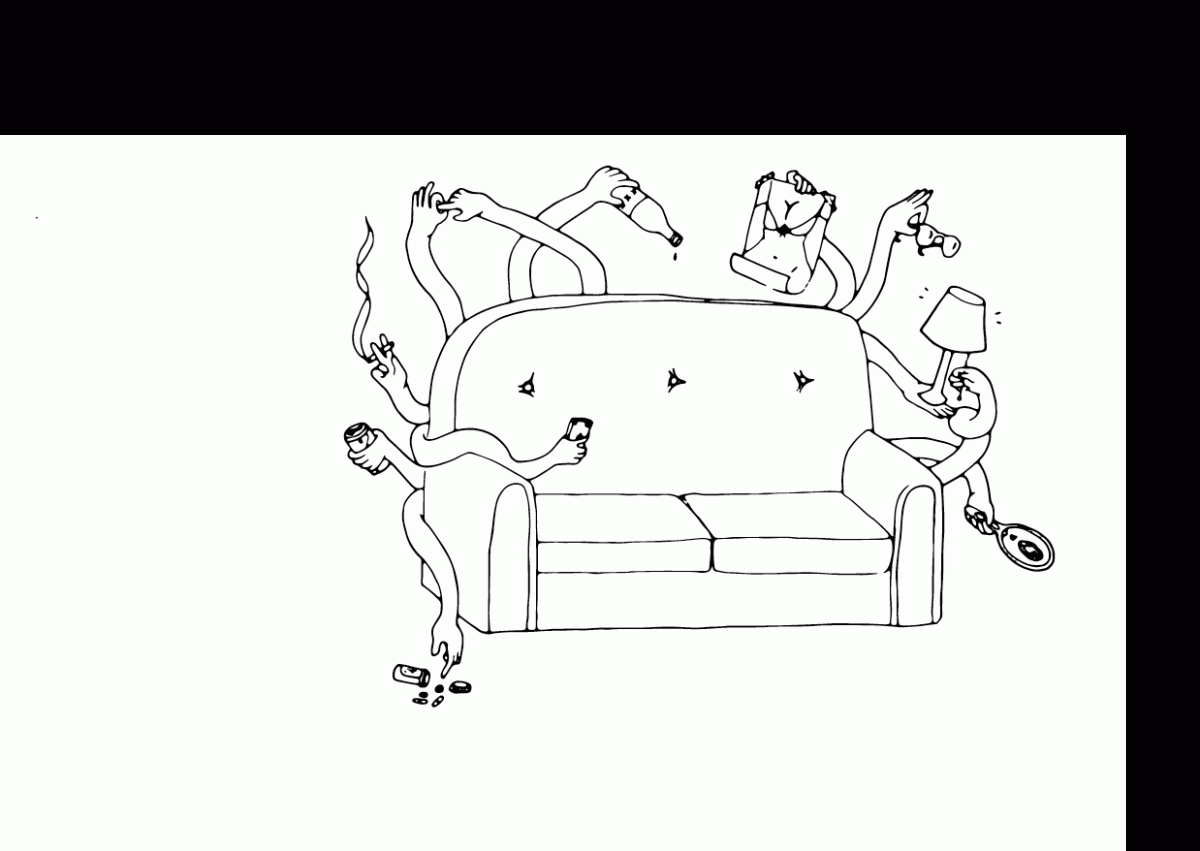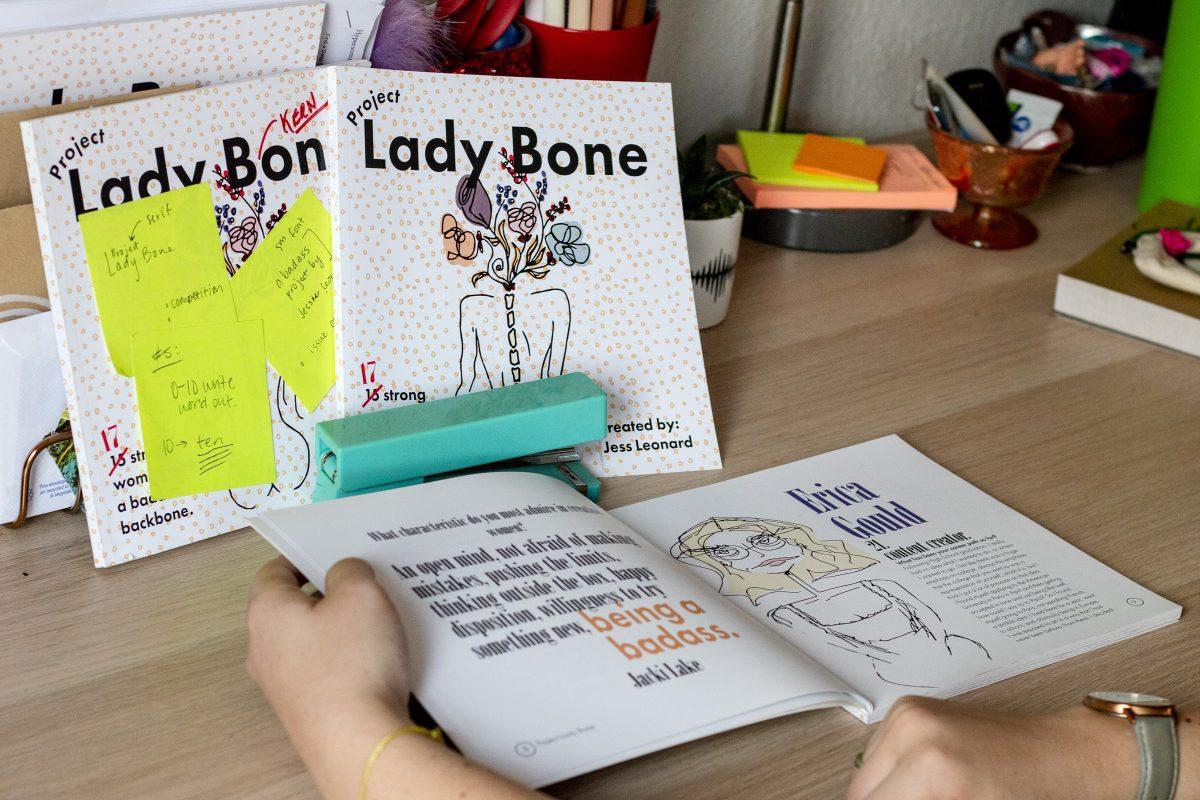There’s always been a need for something to laugh at—an escape from reality or a reprieve from monotony—but when it’s you as the punchline, the truth hurts. If we remove ourselves from an uncomfortable situation though, becoming an observer rather than a participant, we might empathize and ultimately find humor without the agony. Thus, the best comedies mine jokes from the most afflicting of our pains and reveal them as cultural truths. Such is the case for three shows that are leading the meta, serial self-destructive comedy revolution: “Big Mouth,” “Bojack Horseman” and “Rick and Morty.”
These shows illuminate cultural truths that have failed to fill our television screens thus far—topics ranging from depression to promiscuity to internalized hatred. Check Twitter and you’ll see the brutal transparency millennials have now. Talk of drugs, mental health, fears, body images and self-deprecation are not taboo. In fact, they are retweeted thousands upon thousands of times. On Finstas, or fake Instagrams, people post privately to their secluded publics about their most intimate thoughts with reckless abandon. On Snapchat, our stories become less curated and more stream of consciousness by the day. Some may see it as over sharing. For others, it’s basic communication.
The line of what is okay to say or not on television has been pushed even further by Netflix’s newest animated comedy, “Big Mouth.” Boasting a star-studded cast that includes Maya Rudolph, Fred Armisen, Jenny Slate and Jordan Peele, the show follows a group of sixth graders as they undergo the awkward and embarrassing transition of puberty. And the show doesn’t beat around the bush when it comes to discussing puberty. Its unabashed approach—be it talking vaginas or hormone monsters—subverts the norm that sex should not be so frankly discussed at a young age. In many ways, the show serves as a more engaging and informational approach to sex education that public schools may lack.
Throughout the series we witness several family dynamics that are anything but the nuclear model. For much of televised sitcoms, from “The Simpson’s” to “Bob’s Burgers,” the family is presented as a dysfunctional group that ends up loving and sticking with each other at the end of the day. Families have oft been depicted under the mythologized Anglo-televised light, yet that’s not what they are. Millennials know families can be messy, broken, overbearing and forgotten. One of the show’s main characters, Jessi, finds out her father is a stoner. She also discovers that her mother is cheating and has fallen in love with another woman. Another character, Jay, has an alcoholic who forbids hugging in the household while his dad is unfaithful, making Jay wait in the car while he sleeps with other women. In addition, Nick, Jessi’s best friend, has an overbearing mother and father who see no boundaries for expressing their feelings. Each of these families supersedes the televised family standard, not just through their structure, but through diversified strata of love.
But it’s not just the representation of so many unique families that lures millennials to the screen, it’s that each show is both animated and self-referential. The writers revel, tongue-in-cheek, at the fact that you are watching their shows. In “Big Mouth,” characters call out Netflix, their own distributor. In “Rick and Morty,” they explicitly discuss their characters’ season-long arcs. These shows bleed culture. They subvert the expectation that animation is full of bright colors, family-friendly jokes, and happy endings. They challenge that shows should teach you how to be nice, the importance of sharing, or what the tip of a shoelace is (it’s an aglet, for any of you who didn’t watch “Phineas and Ferb”). Animation has the power to convert complex, crude ideas and intangible objects into illustrative, tasteful artwork.
The opportunity for meta and visual comedy to be explored in animation is exemplified in Netflix’s critically-acclaimed series “Bojack Horseman.” “Bojack Horseman” follows a washed-up sitcom star as he lives off the money of his show’s riches in Hollywood, drinking incessantly and insulting to the few people that surround him. Set in an anthropomorphic world where humans and animals walk bimodally (on two legs) and exist equally, each episode is rich with background jokes and pop culture allusions that can be missed with the blink of an eye. The show’s visual identity is extremely particular—so much so that it has created one of the best television intro sequences out there: a psychedelic jaunt that blends vibrant watercolor and digital cubism.
“Bojack Horseman,” now in its fourth season, has found its groove. Each episode builds upon the last to create a nuanced narrative of interwoven storylines that blend emotional lows and touching highs—none of which would be as dazzling had the viewer not watched in order. Such is the case for “Big Mouth” and “Rick and Morty” as well, where the episodes are designed to be watched sequentially. Historically adult animated comedies, from “Family Guy” to “Futurama,” existed episodically, allowing viewers to come and go from the series as they please without losing context. Instead, for the new wave of these millennial comedies, it is their sequential format that helps make these shows successful.
“Rick and Morty,” on its third season, is perhaps the strongest case for this emphasis on narrative sequencing. The show is now regarded as the favorite of millennials between ages 18-34 based on Nielsen ratings and as reported by “Fortune” and “Vice News.” The show’s viewership is up 81 percent from its previous seasons, which may be in part thanks to torrenting, or the illegal downloading of content, an activity the show nearly encourages on its social media accounts. Its following is rocketing past the likes of broadcast comedies such as “The Big Bang Theory” and “Modern Family.” “Rick and Morty” is so popular that it even enticed many McDonalds chains across America to bring back their long-lost Szechuan sauce for a limited release after quickly referencing it on the show.
“Rick and Morty” tells the story of an alcoholic yet brilliant grandfather, Rick, who travels intergalactically and dimensionally with his average and easily manipulated teenage grandson, Morty. In its initial season, each episode had the duo leaving their quasi-normal family, Morty’s mother Beth, father Jerry and sister Summer, to gallivant on another one of Rick’s life threatening quests.
Oozing with existentialist themes and nihilism, “Rick and Morty” has profited from its raucous blend of suburban life and science fiction as well as its cold-hearted grasp of jet black comedy. One of the best episodes from its first season—and the entire series—“Rixty Minutes,” was born from improvisational outtakes that later became animated into a fully fledged episode with narrative consequences and crazed humor. In this episode, the A-story satirizes “Peak TV” through interdimensional cable while the B-story finds Beth and Jerry deep into a virtual reality that has them viewing what life would be like had they aborted Summer. The fact that the show constantly reinvents its own rules and never fails to revel in the multi-universe premise it created for itself is astounding.
“Big Mouth,” “Bojack Horseman” and “Rick and Morty” have subverted everything normalized by mainstream adult comedy.” From their vibrant animation styles to outrageous content to harrowingly honest topics, their grasp on millennial humor has been firm. These shows authentically depict the modern sense of self-deprecating wit instead of awkwardly appropriating it or commenting upon it. They also fulfill our need for escapism while operating in the realm of realism. The fact that animals are famous movie stars, or that an alcoholic grandfather can turn into a pickle, or that a vagina can talk to a girl first discovering masturbation, is never questioned. These shows allow millennials to grapple with the dysfunction of families, the frustrating dance of sexuality and the prescience of realism, all while basking in the absurdism that is 21st century television.




![Generations of handmade Native American regalia and decor fill the walls of Crystal Szczepanski’s home on the Confederated Tribes of Grand Ronde reservation. Among them hangs a Pendleton and leather cradleboard crafted by relatives for Szczepanski after the birth of her daughter, Ravin. A carving of a wood canoe is […]](https://ethos.dailyemerald.com/wp-content/uploads/2018/04/b4d48e73893ec02eabc7a89b5591d678-800x1200.jpg)
![Words and Photos by Sarah Northrop Dark rooms, dark skies: Behind black curtains, a metal basin sits among scattered jugs of chemicals, a row of enlargers and mismatched development supplies. On the outside of the darkened space, a red warning light switches on. There’s a darkroom in use. And I’m […]](https://ethos.dailyemerald.com/wp-content/uploads/2018/04/a88cc0af91f19341e0e8afe516d39192.jpg)


![Before dinner, Paige gives James his medicine in the form of a cannabis oil filled capsule. James takes about 45mg of CBD and THC/THCA oil throughout the day. The CBD helps reduce his seizures while the THC and THCA helps regulate his emotions and impulse control. “He is more able […]](https://ethos.dailyemerald.com/wp-content/uploads/2018/01/d78a0fd1da4fdc3992cdea4aebdc20db-1200x800.jpg)



